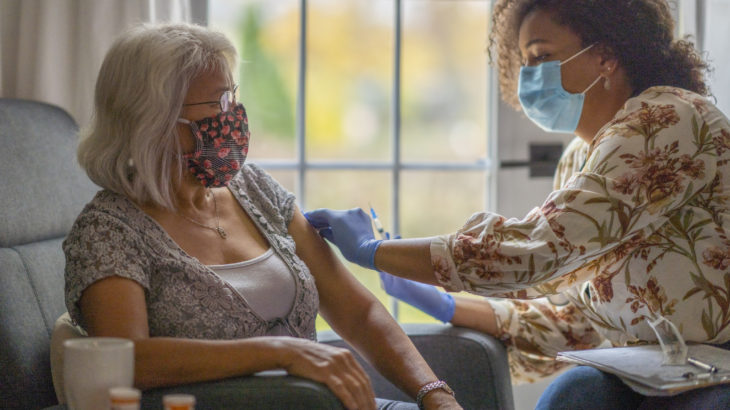Mapping vaccination delivery

A simple online mapping tool developed by two engineering students from the University of Oxford has potentially saved GP surgeries up to tens of thousands of hours planning the delivery of Covid-19 vaccinations to the UK’s one million housebound patients.
VaxiMap, a free website tool created by University of Oxford PhD students Rob Staruch and Tom Kirk, provides mapping software specially designed to work with GP practice data, that can quickly and easily generate efficient route maps for walking or driving.
The tool has saved NHS services significant time, money, and energy in terms of both planning and delivery of home visits, and roughly doubled the number of housebound patients who can be vaccinated in any one period of time.
The idea came about through contact between Rob Staruch and GP Dr David Andrews from Merthyr Tydfil, who had been a fellow student at medical school. Rob noticed that Dr Andrews was tweeting about the difficulty of planning routes to his housebound patients.

Staff at the practice were inputting addresses individually into Google maps and using a manual process to work out which patients lived near each other, plotting journeys from postcode to postcode.
Simple intervention
“I felt there were established platforms that could be utilised to streamline this into a much more efficient process,” said Rob. “These people are already overstretched so I thought a simple intervention could really help them.”
Rob, now clinical lead for the project, approached Tom Kirk, Vaximap’s technical lead, who he knew had the skills to build a tool that could automate the process of planning home visits. Tom designed a solution, and in discussion with Dr Andrews and other GPs a prototype was quickly launched.
Tom said: “Because we were speaking directly to GPs, we knew exactly what was needed, so my job was to build the simplest possible thing that ticked all their boxes. The whole project – and the fact that we were able to get it online in 48 hours – is testament to the power of open-source software. All the tools we’ve used are freely available for anyone to access.”
One example of how feedback from GPs based on their reuirements helped the development of the service is the fact that VaxiMap offers directions for either driving or walking. The latter option was added by request from a GP in Stockwell, London, who pointed out in the urban environment, it’s much quicker for them to walk around. “Adding that was a no-brainer,” says Tom.
Feedback from the GPs enabled the system to be refined and improved, to the point where it could be formally launched in December 2020 as the current VaxiMap website.
To use the tool, GP practice managers simply use their existing NHS patient database to create an Excel file with anonymised patient identifiers and locations, and upload it to the VaxiMap website, which then plots the optimum journey in seconds. The platform does not track any patient data, so it is entirely compliant with data protection legislation.
‘Mammoth task’
Dr Andrews said: “We have to do something huge, a mammoth task on top of lots of extra work. So, anything where we can gain an efficiency is really helpful. VaxiMap takes seconds and it saves time. It’s so useful because it helps the most vulnerable groups.”
VaxiMap was quickly taken up by GP practices all over the UK, with more than 27,000 routes built for almost 300,000 patients by mid-May 2021. The total time saving now runs into tens of thousands of staff hours across the UK, split roughly 45:55 between GP practice managers and the nurses delivering the vaccinations.
There is also potentially a positive impact on the mental capacity of staff because the automated system means that practitioners can use less ‘decision-making’ capacity for this process, which is important in reducing burnout and overwork during these unprecedented times.
Rob’s background as a medical doctor in the armed forces, which he says has given him an understanding of how multiple disciplines can be used to solve problems, and how to communicate issues across disciplines.
Engineering solution
Tom is an engineer by training, with a broad skillset in maths, applied physics and software engineering. This background has allowed him to identify problems faced by clinicians and translate this into an engineering solution.
This is the second time Rob and Tom have put their knowledge to use in the fight against Covid-19, as they were both also involved in creating OxVent, a rapidly deployable, scalable, low-cost mechanical ventilator. It is their combined expertise that has enabled the success of VaxiMap.
To find out more about Vaximap, read our case study.


